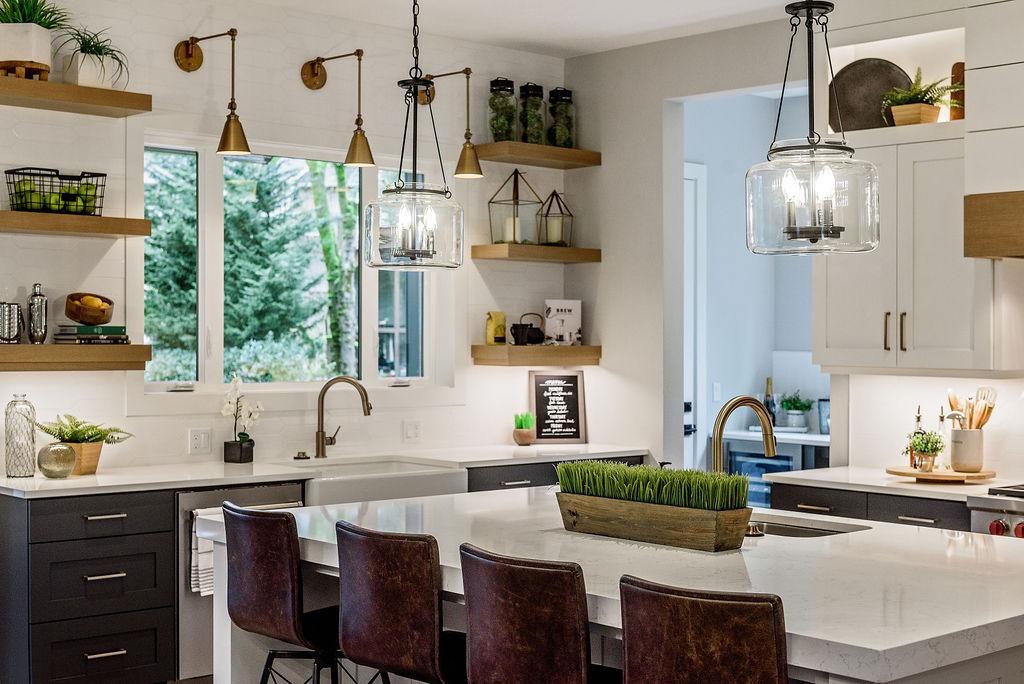How to Coordinate Lighting Fixtures Across Your Home
Lighting is one of the most important elements in home design, influencing everything from ambiance and mood to style and functionality. Coordinating lighting fixtures across your home can transform your living spaces into balanced, inviting environments. But aligning various light types and styles throughout multiple rooms can be overwhelming without the right approach.
In this guide, you will discover effective strategies on how to coordinate lighting fixtures across your home, along with practical tips, style considerations, and expert advice to elevate your interior design effortlessly.
Why Coordinating Lighting Fixtures Matters
When lighting fixtures are well coordinated:
- Visual consistency is achieved, making your home feel cohesive and intentionally designed.
- Ambiance and mood can be controlled and balanced more effectively across rooms.
- Functionality is enhanced, ensuring that each room has appropriate lighting suited to its use.
- It highlights architectural and design features, improving overall aesthetic appeal.
Without coordination, lighting can feel disjointed, mismatched, or inefficient.
Step-by-Step Guide to Coordinate Lighting Fixtures Across Your Home
1. Establish Your Lighting Style
Before buying or installing any fixture, determine your overall lighting style. Are you aiming for:
- Modern minimalism with sleek, streamlined fixtures?
- Classic elegance featuring chandeliers and traditional sconces?
- Industrial vibes with exposed bulbs and metallic finishes?
- Eclectic mix that blends different periods and styles?
Choosing a dominant style helps unify your fixtures and ensures they complement your home décor.
2. Create a Lighting Plan By Room
Assess the function and size of each room to decide on the fixture types needed, such as:
- Ambient lighting: General illumination using ceiling fixtures or recessed lights.
- Task lighting: Focused light for activities like reading or cooking (table lamps, under-cabinet lights).
- Accent lighting: To highlight artwork, architectural details, or plants (spotlights, wall washers).
List the number and style of fixtures for each purpose per room to ensure balance.
3. Maintain Consistent Materials and Finishes
The finish on lighting fixtures directly affects cohesiveness. Popular materials include:
| Material/Finish | Common Styles | Best For |
|---|---|---|
| Brushed nickel | Modern, transitional | Kitchens, bathrooms |
| Matte black | Industrial, contemporary | Living rooms, offices |
| Antique brass | Traditional, vintage | Dining rooms, entryways |
| Chrome | Minimalist, modern | Bathrooms, kitchens |
Pick one or two finish tones to repeat throughout your fixtures to unify the look.
4. Balance Fixture Sizes and Scale
Scaling your lighting fixtures appropriately prevents visual imbalance:
- Large chandeliers work well in spacious dining rooms but overwhelm small bathrooms.
- Use pendant lights in clusters for kitchen islands to add symmetry.
- Match wall sconces’ size and style to nearby ceiling fixtures for harmony.
5. Use Dimmers and Smart Controls
Integrating dimmers and smart lighting controls not only adds functionality but also allows you to adapt lighting mood consistently across rooms.
Practical Tips to Seamlessly Coordinate Lighting Fixtures
- Choose a color temperature range: Stick to warm (2700K-3000K) or cool (4000K-5000K) to keep light color consistent.
- Mix layers carefully: Ensure ambient, task, and accent lighting work together without competing.
- Consider the architectural style: Fixtures should enhance rather than clash with your home’s design.
- Use a focal point: Let one statement fixture (like a chandelier) anchor the design for each main space.
- Plan wiring before purchase: Coordinating fixtures is easier with a tailored electrical plan, especially in renovations.
Case Study: Coordinating Lighting in a Modern Open-Concept Home
Consider a modern 3-bedroom open-concept home with flowing kitchen, dining, and living spaces. The homeowner wanted lighting that felt unified but distinct enough for different zones.
- Lighting Style: They chose matte black fixtures with minimalist profiles for a clean, contemporary aesthetic.
- Plan: Large black metal pendant lights over the kitchen island, a geometric chandelier in the dining area, and matching matte black sconces in the living room.
- Materials: Matte black was used throughout, accented with natural wood tones in furniture to soften the space.
- Technology: Smart bulbs and Wi-Fi-enabled dimmers allowed centralized control and mood settings.
The result? The home felt visually coherent while each area functioned distinctly with tailored lighting – a perfect example of coordinated lighting fixtures across connected spaces.
Benefits of Coordinated Lighting Fixtures
| Benefit | Why It Matters |
|---|---|
| Enhanced Aesthetic Harmony | Creates a visually pleasing and unified environment |
| Improved Functionality | Room-appropriate lighting supports daily activities |
| Increased Home Value | Thoughtful lighting design appeals to buyers and renters |
| Energy Efficiency | Smart coordination and controls reduce wasted power |
Final Thoughts: Coordinate Lighting Fixtures with Confidence
Coordinating lighting fixtures across your home doesn’t have to be complicated. By establishing a clear style, creating a thoughtful plan, and paying attention to materials, scale, and function, you can achieve a harmonious and inviting atmosphere throughout your living spaces.
Remember: great lighting enhances the way you use and feel in your home-it’s an investment in comfort, style, and value. Use this guide as your roadmap to thoughtfully selecting and coordinating lighting fixtures that reflect your taste and elevate your home’s ambiance.
Start today by evaluating your existing fixtures and envisioning how a cohesive lighting approach could transform your space. Happy lighting!



